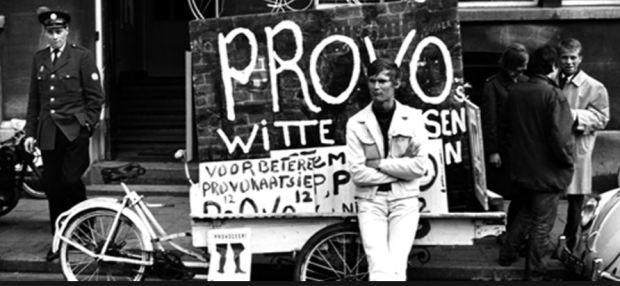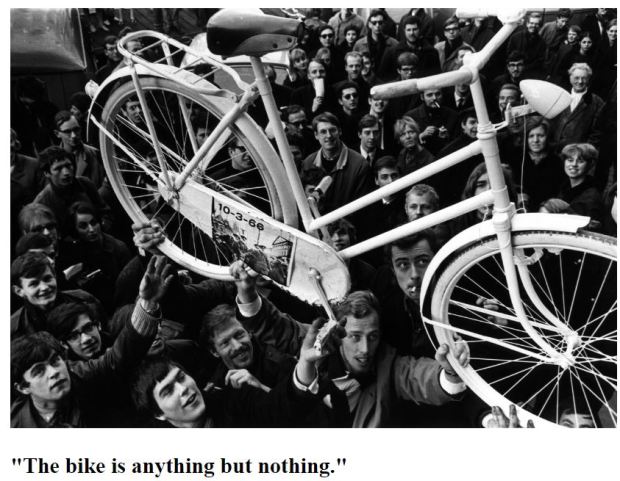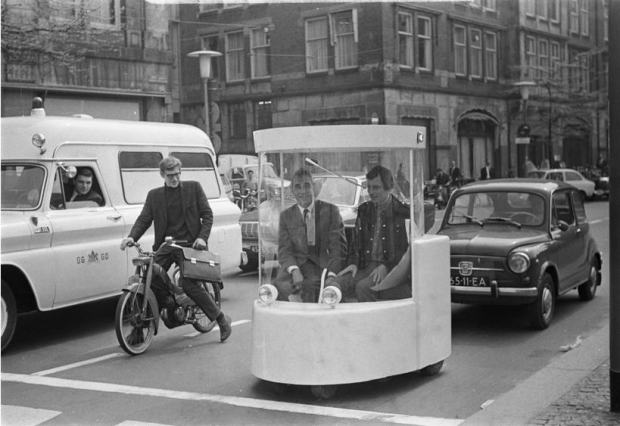 A GREAT IDEA HAS WINGS:
A GREAT IDEA HAS WINGS:
HERE’S A NUMBER LUUD CAME UP WITH IN 1967 (that it took the world a full generation to understand and finally equal).
The number was 10,000.
(But it was not only a number — it was at its base a wonderful, original and city-transforming, environmental and life quality concept.)
This was the number of white bicycles that Mr. Schimmelpennink proposed in his public bike master plan for Amsterdam in 1967. (Proposal rejected by the municipal council.)
After that radio silence on the post-White Bike front for seven years. It took until 1974 for the first new public bike project when the city of La Rochelle launched a free bike-sharing programme, Vélos Jaunes (Yellow Bikes). Followed at first slowly, cautiously but then increasingly with a mounting wave of tidy new projects, most in Europe, most successful, and almost all of them small.
Continue reading →


 An important element of our Better Choices sustainability strategy is to achieve our carefully-considered objectives for the city, often very demanding, without avoidable social conflicts and divisions into opposing camps. For that we need to be attentive to soft policy techniques.
An important element of our Better Choices sustainability strategy is to achieve our carefully-considered objectives for the city, often very demanding, without avoidable social conflicts and divisions into opposing camps. For that we need to be attentive to soft policy techniques.

 A GREAT IDEA HAS WINGS:
A GREAT IDEA HAS WINGS: In the 1960s, a Dutchman named Luud Schimmelpennink created a ‘”white bike” plan to fight against harmful pollution and cars. His invention has changed public transportation around the world. So why did his bicycle-loving home city never embrace it?
In the 1960s, a Dutchman named Luud Schimmelpennink created a ‘”white bike” plan to fight against harmful pollution and cars. His invention has changed public transportation around the world. So why did his bicycle-loving home city never embrace it?





